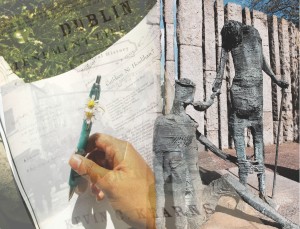In center city Dublin lies a solitary park that has been my frequent escape for inspiration and contemplation. It is big enough to incorporate the beauty I imagined in a fantasy book, and small enough to take a stroll around the perimeter without getting lost. I don’t think I even remember the last time when I was wholly satisfied with a city park, but St. Stephen’s Green Park of Dublin did the trick—at least when I just wanted to clear my mind and get my creative juices flowing. I didn’t expect the strange feeling I felt when I went on a Saturday to catch up on some reading from the book, Dublin, Tenement Life.
My plan was to first get into the mindset to understand the wretched tales of the tenement dwellers. As I walked down the park, I turned to the statues to get inspiration, particularly the ones of Irish leaders who stood up for Ireland’s freedom and human rights. But there was something missing when I looked at those proud, yet mundane faces, leading me to become continuously distracted by how beautiful the day was. It was then when I passed the famine memorial, and something bitter grasped my thoughts. It was a feeling I got whenever I passed this particular work of art—a deranged headless figure feeding an empty spoon to a collapsed body. I knew the Irish famine was a tragic event in Ireland’s history, causing about a million people to die from starvation. Usually a memorial plaque or wall would have sufficed in paying homage to the dead, but these sculptures single-handedly brought out the grotesqueness and horror of how the famine truly tore away all hope for the Irish people. For me, just the physical construction of the sculptures was enough to make me feel uncomfortable. The thin mutilated bodies without a distinct face made them seem anonymous and terrifying. The texture of the sculptures was harsh and jagged, and the eroded color made them seem burnt and crippled. If I had not known what they were, I still would have associated them to something beastly in the sculptor’s mind.
It was hard to look away, and I soon found myself molding dark and ghoulish characters in my head for a future animation project. On the plus side, I was in the mindset to read my book. But even then, the sight of tourists taking pictures with the memorial sculptures and little kids running by them without a second look made me wonder about the statues in the park overall. Were they all there simply to invoke a reminder and emotion? Or could some sculptures be there for another purpose entirely—like a play-thing for children or a source of inspiration for creative work? It was a thought that occupied my mind for the rest of the day. I never got a chance to get back to the book.

